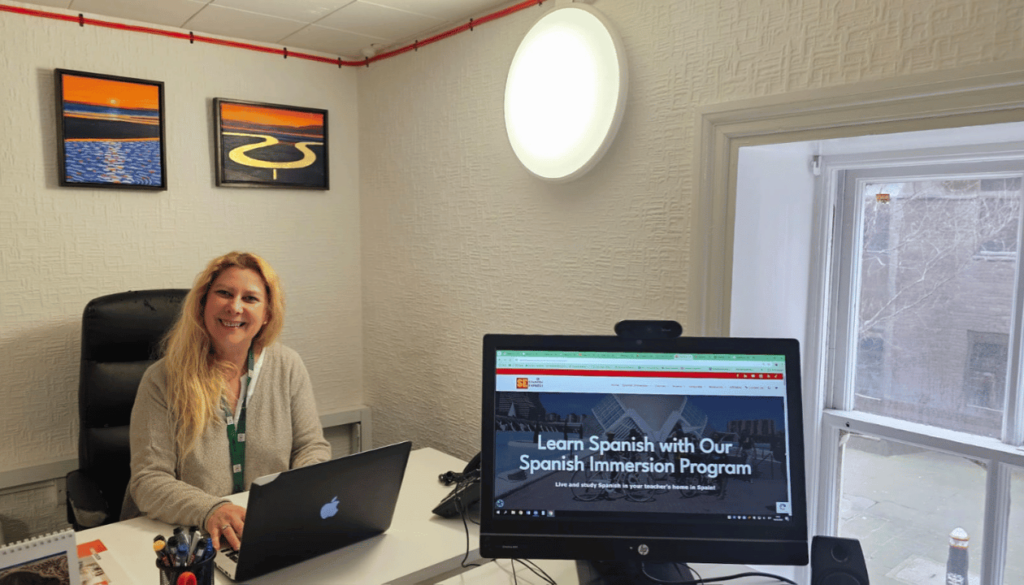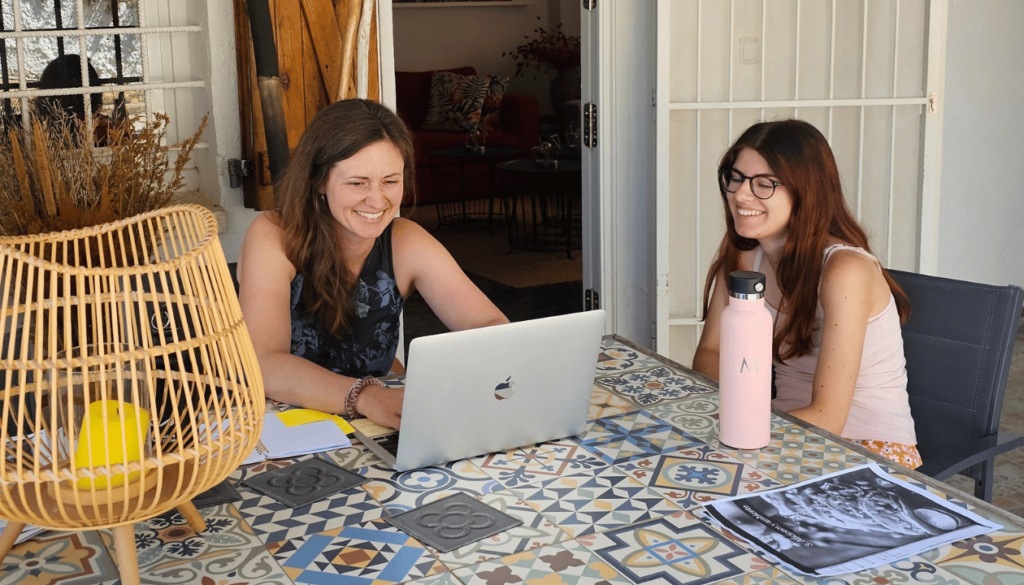

Writing an effective formal email in Spanish is a crucial skill in today’s multilingual business. Spanish is spoken in Spanish-speaking countries across Europe, the Americas, and beyond. So, learning to write an email in Spanish properly can open doors in your career and personal communications. Writing emails is also a practical way to support learning Spanish and to develop your Spanish skills for both business and personal communication.
In this comprehensive guide, we will teach you everything from basic Spanish email phrases to advanced expressions, with 101+ useful phrases you can use. We’ll also cover email greetings and email greetings in Spanish, including both formal and informal options. By the end, you’ll be able to draft clear, polite emails in the Spanish language that impress native speakers and maintain a professional, formal tone.
We’ve also included templates (Spanish with English translations) for common email scenarios, so you can see these phrases in action. Let’s dive in!

Formal vs. Informal Spanish Emails
One key aspect of writing an email in Spanish is knowing when to use formal language versus informal language. Spanish, like many languages, has distinct formal and informal forms of address. In professional or business emails, you should write in Spanish formally, meaning you will use formal tone and grammar to show. Here are the main points to remember:

When writing informal emails, you can use more relaxed greetings and phrasing. For example, ‘good morning’ is a friendly, informal greeting often used in casual emails.
Use “Usted” instead of “Tú”:
Always address the recipient with formal “usted” (or plural “ustedes”) rather than the informal “tú” or “vosotros” when writing a formal email. For example, say «Le escribo para…» (“I write to you to…”) instead of «Te escribo…». This extends to verb conjugations (formal usted conjugations) and pronouns. Using formal usted is like wearing business attire in your writing – it shows respect.
Formal Pronouns and Grammar:
Along with “usted”, use corresponding possessive adjectives and indirect objects that match the formal tone. That means using “su” (your, formal) instead of “tu” (your, informal), and “le” instead of “te” for indirect objects. For instance, «Le envío adjunto el documento» (“I’m sending the document to you”) uses “le” to be respectful. Small details like these maintain the formal language required in Spanish business correspondence.
When to use Informal:
Reserve informal language for personal or casual emails in Spanish – for example, writing to a close friend or a colleague (address as “tú”). In such informal situations, you can use “tú”, first names, and more casual tone. For instance, «¿Cómo estás?» (“How are you?”) or «Nos vemos pronto» (“See you soon”) are fine in an informal email to a friend. However, informal greetings and phrasing should not be used in professional business emails, as it may come off as disrespectful or too.
Remember that in Spanish-speaking countries, formality in professional writing is generally expected more than in some other countries. Err on the side of courtesy and formality when in doubt. Using a formal tone shows professionalism and politeness, which helps you make a good impression in any formal correspondence.
Email Format and Key Components (Formato del correo)
A formal email in Spanish follows a structure similar to formal emails in English. However, there are a few format conventions to note when writing emails in Spanish:

Subject Line (Asunto):
The subject line should be concise and informative, just like in English. One difference: in Spanish, subject lines are usually written in sentence case (only the first word capitalized, unless proper nouns) rather than title. For example: Asunto: Solicitud de información sobre el producto X (“Request for information about product X”). Also, if something is urgent, you might tag the subject with URGENTE: as needed. Keep it brief and clear.
Greeting (Saludo):
This is the opening address, like “Dear…,” line. In Spanish formal emails, the greeting is typically followed by a colon (:) instead of a comma. We’ll cover formal greetings in detail in the next section.
Introduction / Opening Sentence (Introducción / Frase de apertura):
In Spanish, it’s common to begin with a polite opening sentence or phrase that sets a courteous tone before getting to the main point. We’ll provide many examples of these courteous openers below.
Body (Cuerpo del correo):
The main content of the email, where you explain your purpose, provide information, or make requests. It’s important to maintain a formal tone throughout, organize your points clearly, and be concise. Use paragraphs to separate ideas and avoid overly long sentences. We’ll list useful phrases to structure your message in the body.
Closing Lines (Despedida):
A formal closing in Spanish often has two parts: a polite closing sentence and a farewell sign-off. The closing sentence might thank the reader or express anticipation (e.g. “I look forward to your reply”), and the sign-off is the final word like “Sincerely”. We will cover many closing phrase options and sign off formulas to end your email politely.
Signature (Firma):
After the sign-off, include your name and optionally your title, company, and contact information. In a business email, a full signature block with your position, company, phone, etc., is common. For example:
Juan Pérez
Gerente de Ventas, ABC Corp.
+34 123 456 789 – juan.perez@abccorp.com
Following a consistent format like the above will make your writing clear and professional. Now, let’s look at each part in detail along with common phrases and examples.
Formal Greetings (Saludos formales)
Begin your formal email with an appropriate greeting. The equivalent of “Dear [Name],” in Spanish depends on formality and the recipient’s gender and title. Here are some standard Spanish greetings for emails:
- «Estimado Señor [Apellido]:» – “Dear Mr. [Last Name],”.
- «Estimada Señora [Apellido]:» – “Dear Mrs. [Last Name],”.
Estimado/Estimada means “esteemed” or “dear” in a respectful way. If you’re writing to a woman and unsure of marital status, Señora is generally acceptable (use Señorita for a very young or unmarried woman only if relevant). Note that «Estimado» ends in -o for Dear Mr. (masculine) and «Estimada» ends in -a for Dear Mrs. (feminine). You can abbreviate Señor as Sr. and Señora as Sra. in emails, which is common.
«Estimado/a [Nombre Completo]:» – “Dear [Full Name],”. This format is a gender-neutral option when you don’t want to assume gender (for example, «Estimado/a Alex García:» if the name could be male or female, or you simply prefer to include both endings).

Professional Titles:
If the person has a title (like Doctor, Professor, etc.), it’s polite to use it. For example: «Estimado Dr. Gómez:» (Dear Dr. Gómez) or «Estimada Prof. Ramírez:» (Dear Professor Ramírez). In many Spanish-speaking countries, including titles is a sign of respect. Common titles include Dr. (doctor), Lic. (Licenciado, for someone with a bachelor’s degree), Mtro. or Maestro (master’s degree, though Maestro also means teacher), Ing. (Ingeniero, engineer), etc., e.g., «Estimada Lic. Martínez:» if writing to someone you know has a Licenciatura.
«A quien corresponda: – “To whom it may concern:”
Use this if you truly don’t know the name of the person who will read your email (for instance, a general inquiry to a company or a government office). It’s the Spanish equivalent of “To whom it may concern,” and is a standard formal greeting when you lack a specific contact name.
Plural Forms / “Dear Sirs”:
If writing to multiple people or addressing a department, you might use «Estimados Señores:» – literally “Esteemed Sirs,” meaning “Dear Sirs/Dear all,”. This is somewhat formal and old-fashioned but can be used when addressing a group (note «Señores» can refer to a mixed-gender group in Spanish). For example, «Estimados Señores del Departamento de Ventas:» (“Dear Sirs of the Sales Department,”).
Nowadays, if including women, one might say «Estimados señores y señoras:». Use this only in very formal correspondence or when addressing a broad audience like in an open letter. In most business emails, you’ll be addressing one person directly (or you’ll CC others but still write to one person).
Semi-formal greetings:
In somewhat less formal business emails (e.g., if you’re on a first-name basis but still polite), you might simply greet by name: «Hola, [Nombre]:» or «Buenos días, [Nombre]:». However, formal emails should stick to the formulas above (Estimado/a) rather than Hola in most cases. Hola is an informal greeting unless used in a friendly but professional context with someone you know well. When in doubt, use Estimado/a.
Punctuation note:
Always follow the greeting with a colon “: in Spanish formal writing. For example: «Estimado Sr. López:». This is a key difference – in English you’d put a comma (or nothing in British style), but in Spanish letters and emails the colon is the norm according to the Real Academia.
After the greeting line (which often stands by itself), you typically start the body on the next line (no need to indent paragraphs in emails).
Polite Opening Phrases (Frases de cortesía para abrir el correo)
In English emails, one might jump straight into the purpose (“I am writing regarding…”); but in Spanish, it’s customary to include a brief polite opener or pleasantry first. This sets a formal tone and builds rapport. Here are some common email opening sentences and Spanish email phrases to politely begin your message:

Espero que se encuentre bien.
“I hope you are doing well.” This is a simple courteous wish. You can also say «Espero que esté bien.» or «Espero que todo vaya bien.» (“I hope all is going well”). These phrases show concern for the reader’s well-being. They are the Spanish version of phrases like “I hope you’re well” which is a common email nicety. (Note: “Espero que se encuentre” and “Espero que esté” both mean “I hope you are” in formal context.)
Espero que este correo lo encuentre bien
“I hope this email finds you well.” A variation of the above, explicitly referencing the email. It’s a direct translation of an English email classic, and it’s used in Spanish tooy. Another similar phrase: «Espero que todo esté bien con usted.» (“I hope everything is well with you.”).
Reciba un cordial saludo
“Receive a cordial greeting.” This sounds a bit formal/literary in English, but in Spanish it’s a warm, polite opener. It’s like sending the person a cordial greeting as you begin. You might sometimes see it at the end of a letter, but it can also work as an opening line.
Es un placer estar en contacto con usted
“It’s a pleasure to be in touch with you.” A polite way to express that you’re glad to contact them. You could expand it to «Es un placer poder saludarle por este medio.» (“It’s a pleasure to greet you through this means [email].”). This shows friendliness while remaining formal (note the use of formal saludarle).
Muchas gracias por su mensaje
“Thank you for your message.” If you are replying to someone, it’s courteous to thank them for contacting you. For example: «Gracias por su correo electrónico.» (“Thank you for your email.”) or «Gracias por su pronta respuesta.» (“Thank you for your prompt response.”). Expressing gratitude acknowledges the other person’s effort and time. (Using «por favor» for “please” is also important in requests, which we will see later.)
Le escribo con el deseo de que todo esté bien
“I’m writing hoping everything is alright.” Another way to convey well-wishes at the start.
Any of these formal greetings and openers can be combined. For instance, you might start: «Estimada Sra. García: Espero que se encuentre bien.» (Dear Mrs. García, I hope you are doing well.) This would be a warm, correct way to begin a professional email.
Tip: These opening lines are formal and might sound flowery when translated word-for-word to English, but they are quite standard in Spanish correspondence. They help in not sounding too abrupt. In contrast, informal greetings in a casual email could be something like «¡Hola María! ¿Cómo estás?» but those should be reserved for friends or close colleagues, not in formal correspondence.
Stating Your Purpose (Expresar el motivo del correo)
After the initial courtesy lines, you should clearly state the purpose of your email. This is often introduced by phrases like “I am writing to…”. Here are essential Spanish phrases to write an email where you explain why you’re contacting the person:
Le escribo para [informarle/consultarle/solicitar…] que…
“I am writing to [inform/ask/request] you that…”. This is a versatile construction. For example: «Le escribo para informarle que su pedido está listo.» (“I write to inform you that your order is ready.”) or «Le escribo para solicitar más información sobre…» (“I’m writing to request more information about…”). «Le escribo para» is a direct way to get to the point after the greeting. It’s one of the most common phrases in formal emails.
Me dirijo a usted para…
“I am addressing you to…”. This is slightly more formal/literary, often used in official letters. For instance: «Me dirijo a usted para expresar mi interés en la posición vacante…» (“I am writing to you to express my interest in the vacant position…”). It’s a polite way to say “I’m writing to you for the purpose of…”. Variations: «Me dirijo a usted con el fin de…» or «Me dirijo a usted a fin de…» (both meaning “I’m contacting you in order to…”).
Escribo en referencia a…
“I am writing in reference to…”. Use this when your email is a follow-up or connected to a previous matter. E.g.: «Escribo en referencia a nuestra conversación telefónica de ayer…» (“I write in reference to our phone conversation yesterday…”). This phrase directly tells the reader what existing context you’re referring to.
Por medio de la presente…
Literally “By means of this [letter]…”. This is a classic formal letter phrase, used similarly to Le escribo para. For example: «Por medio de la presente, quiero informarle de los cambios en el horario.» (“By this letter, I want to inform you of the changes in schedule.”). It sounds very formal and is more common in written letters, but you may see it in emails for official communications.
Mi nombre es _____ y…
“My name is ____ and…”. If you’re writing to someone who doesn’t know you, you might start by introducing yourself: «Mi nombre es Carlos López y soy el coordinador de proyectos en XYZ S.A.» (“My name is Carlos López and I am the project coordinator at XYZ Inc.”). After this, you would typically say why you are writing: «…y le escribo para…». This approach is useful in cold emails or first-time contacts.
On behalf of someone:
«Le escribo de parte de ___…» – “I’m writing on behalf of ___…”. Use this if you are representing someone else or writing for your boss, etc. E.g.: «Le escribo de parte del Sr. Ramírez, director de la empresa…» (“I am writing on behalf of Mr. Ramírez, the company director…”).
Good news/bad news:
If you have especially good news or you need a particularly polite tone, you can use phrases like «Me es muy grato comunicarle…» – “It is my pleasure to inform you…” or «Nos complace informarle…» – “We are pleased to inform you…”. For bad news or serious matters, one often uses an apologetic tone: «Lamento informarle que…» – “I regret to inform you that…”, or «Por medio de la presente, quiero comunicarle un asunto importante…» (“I hereby want to communicate an important matter to you…” – then go into the issue delicately).
After stating the purpose, continue with the relevant details in the body of your email.
Useful Phrases for the Email Body (Frases útiles para el cuerpo del correo)
The body is the main part of your email where you include all necessary information, explanations, or requests. Here we’ll break down some useful phrases by category to help you write clearly and politely. Remember to maintain formal language throughout the body. That means avoiding slang and using polite forms like usted. Also, be direct but polite (directo pero cortés).

Sharing Information or Updates
When you need to give information, confirm details, or share updates, use phrases like:
«Quisiera informarle que…»
“I would like to inform you that…”. This is polite and slightly softer than Le informo que…. E.g.: «Quisiera informarle que el evento ha sido reprogramado.» (“I’d like to inform you that the event has been rescheduled.”)
«Deseo informarle de…» or «Me permito informarle que…»
Both meaning “I wish to inform you that…”. For example: «Me permito informarle que su solicitud ha sido aprobada.» This is very formal, often used in official notifications.
«Le confirmo que…»
“I confirm that…”. E.g.: «Le confirmo que hemos recibido los documentos adjuntos.» (“I confirm that we have received the attached documents.”)
Como (ya) sabrá,…
“As you may already know,…”. Useful for introducing information the reader is likely aware of, to set context. «Como sabrá, la empresa está expandiendo sus operaciones…» (“As you know, the company is expanding its operations…”).
«Adjunto encontrará…»
“Attached you will find…”. If you have attachments, use this phrase: «Adjunto encontrará el informe en formato PDF.» (“Attached you will find the report in PDF format.”) You can also say «Le envío adjunto…» (“I am sending attached…”) or «Anexo [documento]…» (another formal way to say you’re attaching something). Archivo adjunto is the term for an email attachment.
«Por este medio, hago de su conocimiento que…»
A very formal phrase meaning “By this means, I bring to your attention that…”. It was used in one example. It’s flowery, but essentially a way to say “I hereby inform you that…”.
Dates and numbers:
Note that in Spanish, dates are typically written day-month-year, and months are not capitalized (e.g., 10 de julio de 2025 for July 10, 2025). When writing a formal email in Spanish, it’s good to remember these conventions for any dates or figures you include.
Making Requests and Asking for Action
Often your email will request something: information, a meeting, a favor, etc. Politeness is key when asking in a formal context. Useful phrases include:

«Le agradecería si pudiera»
“I would appreciate it if you could…”. This is a very polite way to ask someone to do something. For example: «Le agradecería si pudiera enviarme los detalles a la mayor brevedad posible.» (“I’d appreciate it if you could send me the details as soon as possible.”)
«¿Podría usted… ?»
“Could you…?” in a polite. For instance: «¿Podría usted confirmarme la recepción de este correo, por favor?» (“Could you confirm receipt of this email, please?”). The use of podría (conditional tense) and adding por favor makes it very courteous. You can also phrase it as «Por favor, ¿podría…?» at the start.
«Solicito…»
“I request…”. E.g.: «Solicito amablemente una reunión para discutir el proyecto.» (“I kindly request a meeting to discuss the project.”) Using solicito is formal and direct.
«Me gustaría que…»
“I would like [that]…”. For example: «Me gustaría que me proporcionara más información sobre sus servicios.» (“I would like you to provide me more information about your services.”) This is polite, though a more direct translation is “I would like you to…”, it’s softened by context and tone.
«Cuando tenga la oportunidad,…»
“When you have the chance,…”. For instance: «Cuando tenga la oportunidad, ¿podría revisar el informe adjunto?» (“When you have a chance, could you review the attached report?”). This acknowledges the person’s time.
Offering help in return or general courtesy: «Por favor, no dude en contactarme si necesita algo más.» – “Please do not hesitate to contact me if you need anything else.” This is a very polite way to encourage further communication if needed, often used toward the end of a message. We’ll mention it again in closings.
Expressing Thanks and Consideration
If someone has done something for you or you’re closing off a request, thank them:
- «Gracias por su tiempo/atención.» – “Thank you for your time/attention.” Short and sweet, often used towards the end or in follow-up emails.
- «Le agradezco su ayuda/colaboración.» – “I appreciate your help/collaboration.” To thank someone for their assistance.
- «Agradezco de antemano su atención.» – “I thank you in advance for your attention.” A polite way to wrap up a request, implying you are grateful that they will read/consider it. Similarly: «Gracias de antemano.» (“Thank you in advance.”)
- «Le agradezco mucho su tiempo y consideración.» – “I greatly appreciate your time and consideration.” This is a gracious way to end a request or application, for example, in a cover letter email.
Using these phrases will ensure you maintain a formal tone and politeness throughout your email. Always remember to be clear and concern yourself with providing necessary details without overloading the email. Clarity and courtesy go hand in hand.
Closing the Email (Despedida y Cierre)
As you finish writing the content of your email, it’s important to close with polite remarks and an appropriate sign-off. A strong closing leaves a good final impression. In Spanish formal emails, this usually consists of one or two sentences expressing some combination of thanks, readiness to help, or anticipation, followed by a farewell phrase like “Sincerely” or “Kind regards”.

Polite Closing Sentences
Here are some common sentences to wrap up a formal email before the final sign-off:
«Quedo a la espera de su respuesta.»
“I await your response.” A classic line to indicate you look forward to hearing back. You can make it a bit more polite by adding «Quedo atent@ a su pronta respuesta.» (“I remain attentive to your prompt response”), where @ means you use atento if you’re male or atenta if female – this phrasing pronta respuesta implies you hope for a quick reply.
«Sin más por el momento, quedo a su disposición.»
“With nothing further for now, I remain at your disposal.” This is a combination of two formal elements: “sin más por el momento” basically means “that’s all for now” (implying you have nothing further to add), and “quedo a su disposición” means “I remain at your disposal.” It’s a very polite way to conclude, indicating you’re available for further information or help. A variation: «Sin otro particular, lo/la saludo atentamente…» (“With no further matters, I greet you sincerely…”) which is more letter-like.
«Cualquier cosa, estoy a su disposición.»
“For anything [you need], I am at your disposal.” This is basically a shorter version of the above. Saying “Estoy a su disposición” alone also means “I am at your disposal.” This phrase assures the recipient that they can reach out for any further information or assistance. It’s an elegant way to offer help.
«Muchas gracias por su atención.»
“Thank you very much for your attention.” Often used as a final thanks, especially if you’re ending after explaining something or making a request. For example: «Agradeciendo su atención, me despido cordialmente…» (“Thanking you for your attention, I say goodbye cordially…”).
«De antemano, le agradezco su atención.»
“In advance, I thank you for your attention.” Similar to thanking in advance for what you’re asking. Could also be «Le agradezco de antemano su ayuda.» (“I thank you in advance for your help.”).
«Para cualquier duda o consulta, por favor, no dude en contactarme.»
“For any question or inquiry, please do not hesitate to contact me.” This is a very polite way to encourage further communication if needed, often placed near the end of an email after you’ve given information. A shorter version is «No dude en contactarme para cualquier aclaración.» (“Do not hesitate to contact me for any clarification.”).
«Esperando su amable respuesta…»
“Awaiting your kind response…” Sometimes used to indicate you’ll be waiting for their reply. For example: «Sin más que agregar, y esperando su amable respuesta, me despido…».
«Espero que tenga un buen día.»
“I hope you have a good day.” This is a polite closing wish. Note: tenga (not tengas) is the formal usted form, which is important if you use this phrase in a formal email (the keyword tengas un buen día is informal; in a formal email it must be tenga). This phrase is nice but not as common in written business emails; still, it can be used in certain contexts or if you know the person somewhat.
You don’t need to use many of these at once—usually one or two closing sentences suffice. For instance, you might say: «Quedo a la espera de su respuesta. Muchas gracias por su atención.» (“I look forward to your reply. Thank you very much for your attention.”) That combo works well: first line expresses anticipation, second line expresses thanks.
Formal Sign-off Options (Despedidas formales)
Finally, end your email with a sign-off phrase, followed by your name. In Spanish, just as with the greeting, this closing word or phrase is often followed by a comma, and then you break a line to sign your name (though some style guides may omit the comma, it’s common to include it). Here are the most common sign offs in Spanish:
«Atentamente,»
“Sincerely,”. This is one of the most frequently used closings in formal letters and emails. It literally means “attentively,” short for a longer old phrase «Le saluda atentamente…» (“[someone] attentively salutes you”), but we just use Atentamente, by itself now. It corresponds well to “Sincerely” or “Sincerely yours” in tone.
«Saludos cordiales,»
“Kind regards,”. This is also very common, perhaps slightly less formal than Atentamente but still standard in business contexts. It literally means “Cordial greetings,” and is understood as warm but professional. You can also just say «Saludos,» (“Regards,”) for a slightly more relaxed but still polite tone. However, Saludos cordiales or Cordialmente are safer for formal tone than a plain Saludos.
«Cordialmente,»
“Cordially,”. Another polite option, essentially a one-word version of Saludos cordiales.
«Sinceramente,»
“Sincerely,” (literally). This is a direct cognate of “sincerely”. It’s not used as often as Atentamente or Saludos cordiales, but it’s perfectly acceptable.
«Un cordial saludo,»
“A cordial greeting,” or «Un saludo cordial,» (same meaning). This is like a mix of a closing phrase and a sign-off, used similarly to Saludos cordiales. It’s polite and could translate to “Warm regards.”
After any of these closing phrases, you would put your name on the next line. For example:
Saludos cordiales,
María González
If you have a title or position, you can add it below your name as needed (and company, etc., as discussed in the signature section earlier).
Note: Unlike in English, where we often put a comma before the name (e.g., “Sincerely, John Doe”), in Spanish the convention is typically to put the comma after the closing word and then start a new line for the name (no comma immediately before the name).
Now, a quick note on informal closings for contrast: In a casual email to a friend or close colleague (not in a formal business email), you might use sign-offs like «Saludos,» (Regards/Cheers), «Un abrazo,» (“A hug,” implying warm regards), «Un abrazo fuerte,» (“a big hug”), «Besos,» (“kisses,” for very close friends/family), or «Nos vemos pronto,» (“See you soon”). For example, «Nos vemos pronto, [Nombre]» or «¡Un abrazo, amigo!». Also «Ya hablaremos,» (“we’ll talk later,”) could be something a friend writes. These informal sign-offs convey closeness. However, none of these should appear in a formal or business context – they would be out of place. Stick to the formal options like Atentamente and Saludos cordiales for professional emails to maintain the right tone.
Having covered greetings, body, and closings, let’s put it all together with some examples of formal emails in Spanish. Below are 5 templates demonstrating how to write different types of business emails or formal emails, complete with Spanish and English versions.
Formal Email Templates (Spanish with English Translation)
Below is an example of a formal email in Spanish. This section will provide a few examples of different types of formal emails for various business situations.
The following templates will show various email types in Spanish, with at least 101 combined Spanish phrases and their English equivalents throughout. Use these as models you can adapt. Each example includes a scenario, a Spanish version of the email, and then an English translation. Notice the use of the phrases we discussed – from the greeting (dear Mr/Mrs) to the opening sentence, body, and sign off options like kind regards.

Conclusion
Writing emails in Spanish, especially formal business emails, may seem challenging at first, but with these 101+ Spanish email phrases and tips, you can confidently communicate like a native speaker.
Remember to always use formal language (think formal usted, su, le) in professional contexts, keep a respectful tone, and avoid informal expressions in business correspondence.
Mastering formal Spanish email writing is an essential skill for anyone doing business or communicating in Spanish. It ensures you convey your message effectively and shows your respect and professionalism to Spanish-speaking colleagues or clients. With practice, these phrases will become a natural part of your repertoire.
For even greater impact, hire native Spanish copywriters at Spanish Express for all your corporate needs, including professional email writing. They’ll help you avoid cultural missteps, capture the right tone, and ensure your messages truly resonate with Spanish-speaking audiences.

Happy writing! Or as one might say in Spanish, ¡Feliz escritura de correos! Suppose you follow the guidance and examples above.
In that case, you’ll be able to write an email in Spanish for any situation – from simple inquiries to complex professional discussions – with clarity and confidence.
Ahora, a escribir ese correo electrónico en español… (Now, go write that email in Spanish…) ¡Buena suerte! (Good luck!)

